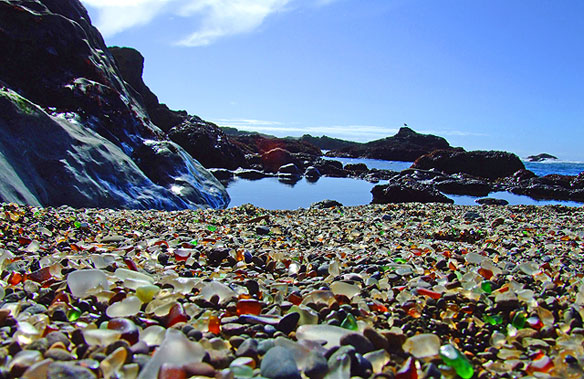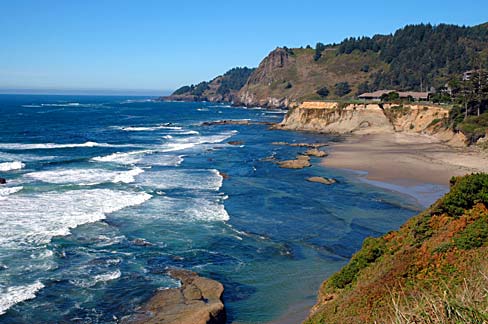
Two articles caught my eye today. The first was about Fort Bragg , California. The second was about Port Orford, Oregon.
Things You Should Know About Fort Bragg, California
For a century the people living in Fort Bragg used a local beach as their city dump. Residents would take glass, appliances, old cars and other household materials and chuck them over the cliff on to the beach where the tides would work their magic over time. Today Glass Beach, as it is known, is part of MacKerricher State Park with no dumping allowed. But the end result of unrestricted human behaviour can be seen in the picture below.

This unnatural beauty required considerable effort to reach the condition it is in today. In 1967 the beach was closed. In 1998 the California Coastal Conservancy got the private owners of the site to sell it to the California State Park system. Now cleaned up of all of the non-glass and ceramic trash what remains is a beautiful outcome from a ghastly human habit of treating the ocean as an unlimited place to dump garbage.
Things You Should Know About Port Orford, Oregon
The local Starbucks and other coffee shops may be playing a role in changing the chemistry of the ocean off Port Orford, Oregon. A study published in July 2012 shows that caffeine is polluting seawater off the Oregon coast. The caffeine isn’t just coming from coffee shops. In fact the research shows that sewer and septic runoff are the principal causes of the pollution. Despite sewage and wastewater treatment plants in place any time a heavy rainstorm occurs the capacity to manage the water volumes is inadequate. The result, an increasingly caffeinated coastal ocean.
Many plants are natural caffeine producers but none of the caffeine found in oceans of the Pacific Northwest appears to be naturally derived. It is coming from caffeine in our beverages, foods and pharmaceuticals. And if caffeine is showing up in coastal waters then what other human produced chemicals are accompanying it?









